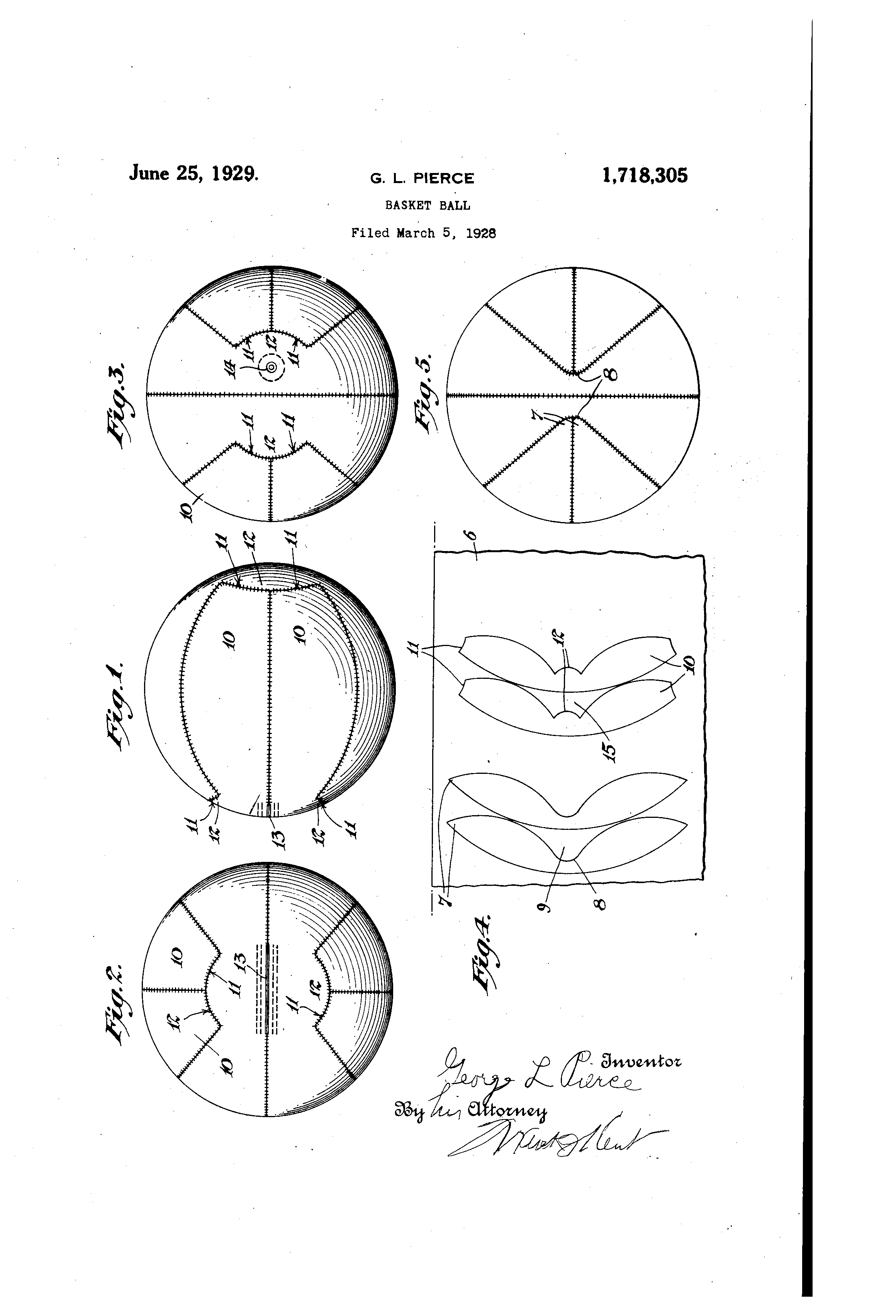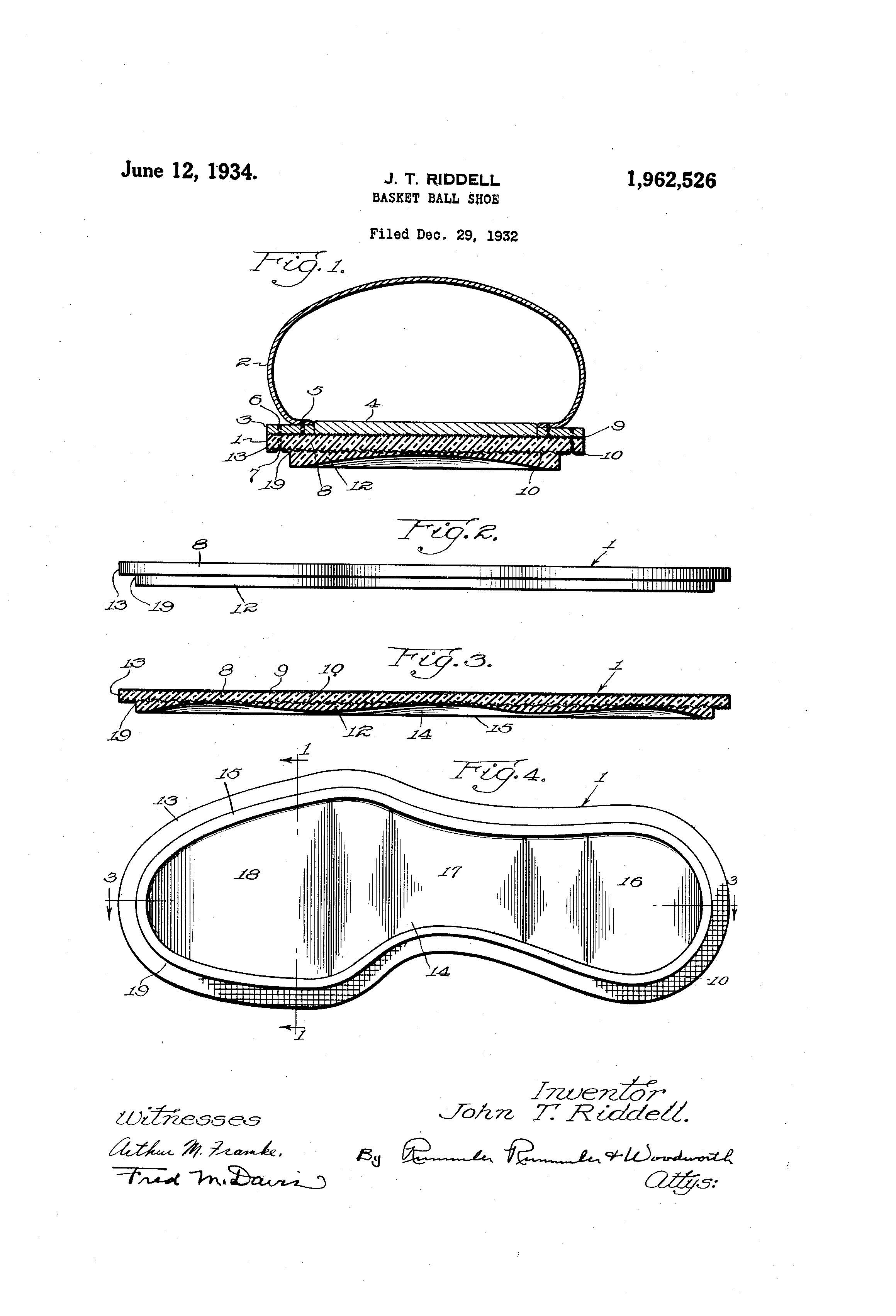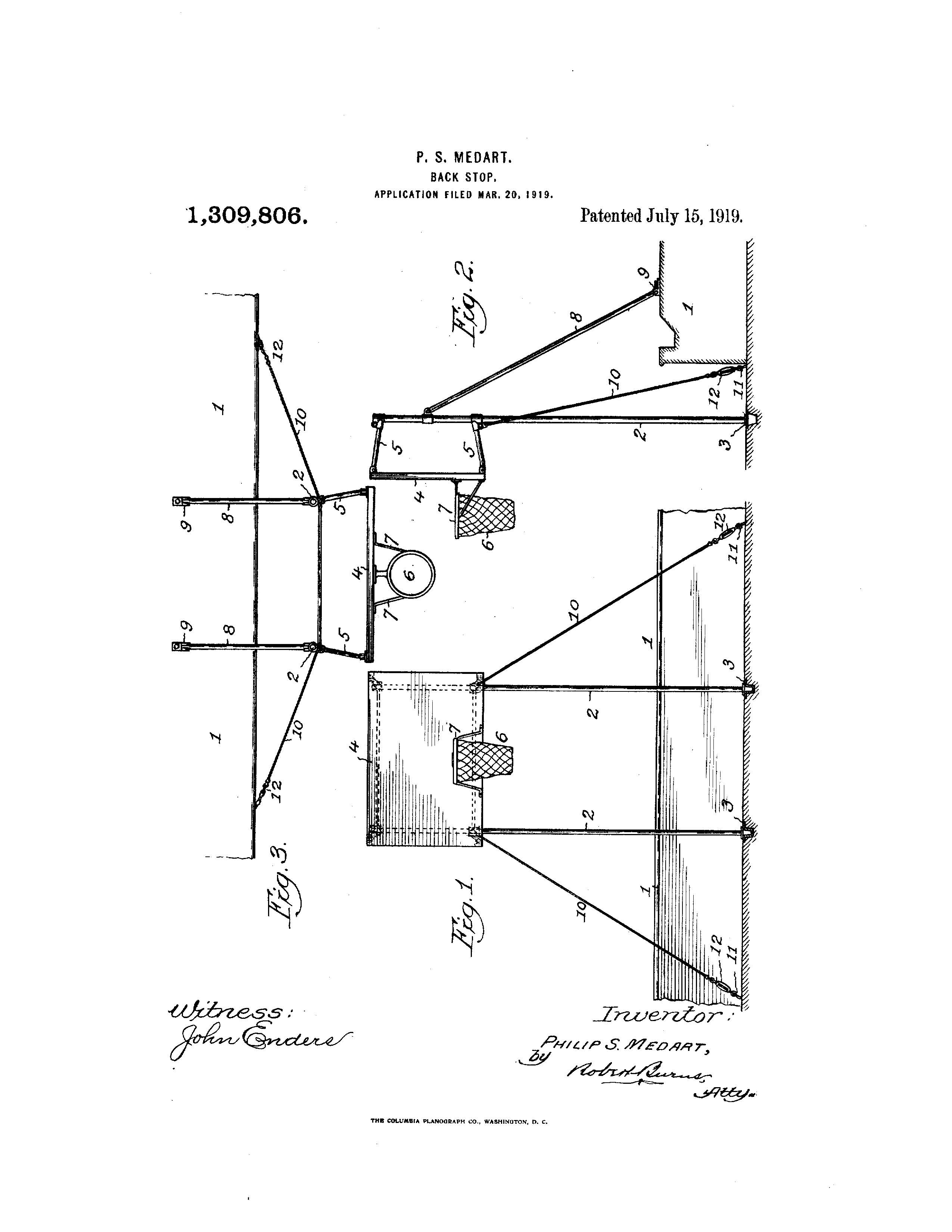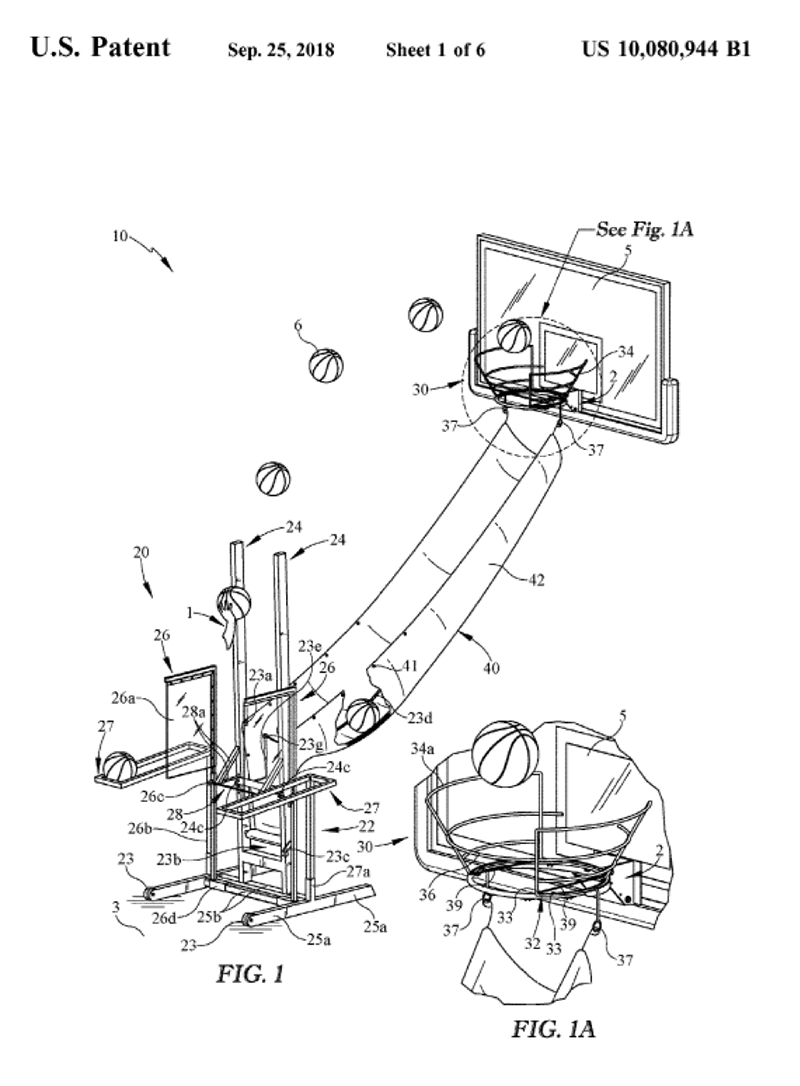Big congratulations to the 2022 NCAA men’s national champions, Kansas Jayhawks!
This March Madness consider how the sport has evolved through innovations in ball design, hoops and training devices.
Basketball
In 1929 G.L. Pierce was awarded U.S. patent #1,718,305 for the basketball itself. It is one of the few basketball-related items that have changed very little over the years.

Basketball Net
The nets were originally peach baskets, though they didn’t hold up very well and often had to be replaced. Also, when nailed up on a wall, the only way to get the ball out of the basket was with a ladder. Naturally, this slowed the games significantly. The next attempt consisted of drilling a small hole at the bottom of the basket so that a stick could be inserted to punch the ball out. This also failed to keep the games moving as the stick would often go missing. The nets continued to be experimented with, until in 1940 U.S. patent #6,746,349 was granted for a resilient net-like body of a generally tapered configuration.

Basketball Shoe
In 1934, John T. Riddell from Chicago received U.S. patent #1,962,526 for a basketball specific shoe. All it really came to was installing a rubber sole onto a leather sole in order to provide players with more friction and reduce tearing. The Riddell company continues to make sporting equipment today, though it has long since retired from producing basketball shoes.

Back stop
Philo Medart granted U.S. patent #1,309,806 on July 15, 1919, for a “Back-Stop” that provides the flexibility of a removable basketball goal. Today portable goals are ordinary, and few spaces are dedicated only to be used as a basketball court. This early portable goal contains both a hoop and a backboard and allowed multipurpose spaces to be converted temporarily into basketball courts.

Basketball Shooting Apparatus
Patrick Bowling of New Haven, Kentucky granted U.S. patent #10,080,944 on September 25, 2018, for a “Basketball Shooting Device” both returns balls and helps with a shooter’s form. He says, “Basketball players often have incorrect shooting habits and/or shooting form when shooting a basketball in to a basketball rim. Therefore, a need continues to exist in the art to correct and/or teach better shooting form, as well as, generate muscle memory of the proper form.” The device has guide panels that help shooters correctly position themselves for a shot.

Suiter Swantz IP is a full-service intellectual property law firm providing client-centric patent, trademark, and copyright services. If you need assistance with an intellectual property matter and would like to speak with one of our attorneys, please contact us at info@suiter.com.
